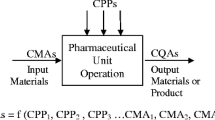Abstract
Quality of product is an important consideration in engineering design activity, certain levels of which can be obtained by utilizing the available resources. Traditionally, a demand for increased levels of quality in the product required the deployment of additional resources. However, it has been reported earlier that it may be possible to increase the product quality, without increasing the resources, by improving the process [1]. Therefore, fundamental effort of this study is in the direction of improving the design process in the design level by offering a feedback tool in the evaluation of the processes called Design Process Monitoring (PROMO) [2]. The purpose of this tool is to monitor the design level activities of a process. The model can be classified as descriptive, or analytical rather than prescriptive; the goal is to study and understand the nature of the design process. In contrast, prescriptive models are for describing the processes which guide the future execution.
Similar content being viewed by others
References
S. N. Delcambre, and M. M. Tanik, “A proposed process modeling framework,” Tech. Report 93-CSE-28, Southern Methodist University, July 1993.
C. Bayrak, “The use of signature properties in the design level process language for feedback,” Ph.D. Dissertation, Southern Methodist University, 1994.
W. Royce, “Managing the development of large software systems,” IEEEWESCON, 1970, pp. 1–9. Reprinted in 9th IEEE International Conference on Software Engineering, Washington, D.C., 1987, pp. 328–338.
B. Curtis, M. I. Kellner, and J. Over, “Process modeling,” CACM 35, pp. 75–90, 1992.
W. S. Humphrey and M. I. Kellner, “Software process modeling: Principles of entity process models,” in Proceedings of 11th International Conference on Software Engineering, Pittsburgh, PA, 1989, pp. 331–342.
R. T. Yeh, M. M. Tanik, W. Rossak, F. Cheng, and P. A. Ng, “Software engineering,” in Handbooks in Operations Research and Management Science, Vol. 3. Elsevier Science Publishers: North Holland, 1992, pp. 195–245.
M. I. Kellner, “Representation formalisms for software process modeling,” in Proceedings of the 4th International Software Process Workshop, Devon, UK, 1988, pp. 93–96.
H. Krasner, J. Terrel, A. Linehan, P. Arnold, and W. Ett, “Lessons learned from a software proess modeling system,” Communications of the ACM 35, pp. 91–100, 1992.
C. Hoffmann, B. Kramer, and B. Dinler, “Multiparadigm description of system development processes,” in Proceedings Software Process Technology Second European Workshop, Trondheim, Norway, 1992, pp. 123–133.
M. M. Tanik and E. S. Chan, Fundamentals of Computing for Software Engineers. Van Nostrand Reinhold: New York, NY, 1991.
A. H. Dogru, S. Delcambre, C. Bayrak, Y. T. Chen, E. S. Chan, W. Yin, M. G. Christiansen, and M. M. Tanik, “An integrated sysem design environment: Concepts and status report,” Journal of Systems Integrations 2(4), pp. 1992, 1992.
A. Dogru, “A process oriented engineering system design framework,” Ph.D. Dissertation, Southern Methodist University, 1992.
M. Christiansen, “Integrating domain knowledge into software components,” Ph. D. Dissertation. Southern Methodist University, 1989.
H. Krasner, J. Terrel, A. Linehan, P. Arnold, and W. Ett, “Lessons learned from a software process modeling system,” Communications of the ACM 35, pp. 91–100, 1992.
E. F. Codd, Cellular Automata. Academic Press: NY, 1968.
A. W. Burks, Essays on Cellular Automata. University of Illinois Press: Urbana, IL, 1970
T. Toffoli and N. Margolus, “Invertible cellular automata: A review,” in: Cellular Automata: Theory and Experiment (Howard Gutowitz, ed.). North Holland: Los Alamos, NM, 1990, pp. 229–253.
A. W. Burks, “The logic of fixed and growing automata,” in Proceedings of an International Symposium on the Theory of Switching. Harvard University Press: Cambridge, Massachusetts, 1957, pp. 147–188.
A. W. Burks, “Computation, behavior, and structure in fixed and growing automata,” Behavioral Science 6(1), pp. 5–22, 1961.
G. A. Hedlund, “Transformation commuting with the shift,” in Topological Dynamics (I. Auslander and W. G. Gottshalk, eds.). Benjamin: NY, 1968, pp. 259.
K. Culik, II, L. P. Hurd, and S. Yu, “Computation theoretic aspects of cellular automata,” in Physica D 45. North-Holland: Amsterdam, 1990, pp. 357–378.
G. Miller, “The magical number seven, plus or minus two: Some limits on our capability for processing information,” The Psychological Review 63(2), pp. 86, 1956.
N. H. Madhavji and W. Schäfer, “Prism-methodology and process oriented environment,” IEEE Transactions on Software Engineering 17(12), pp. 1270–1283, 1991.
Author information
Authors and Affiliations
Rights and permissions
About this article
Cite this article
Bayrak, C., Tanik, M.M. A Process Oriented Monitoring Framework. Journal of Systems Integration 8, 53–82 (1998). https://doi.org/10.1023/A:1008205518059
Issue Date:
DOI: https://doi.org/10.1023/A:1008205518059




